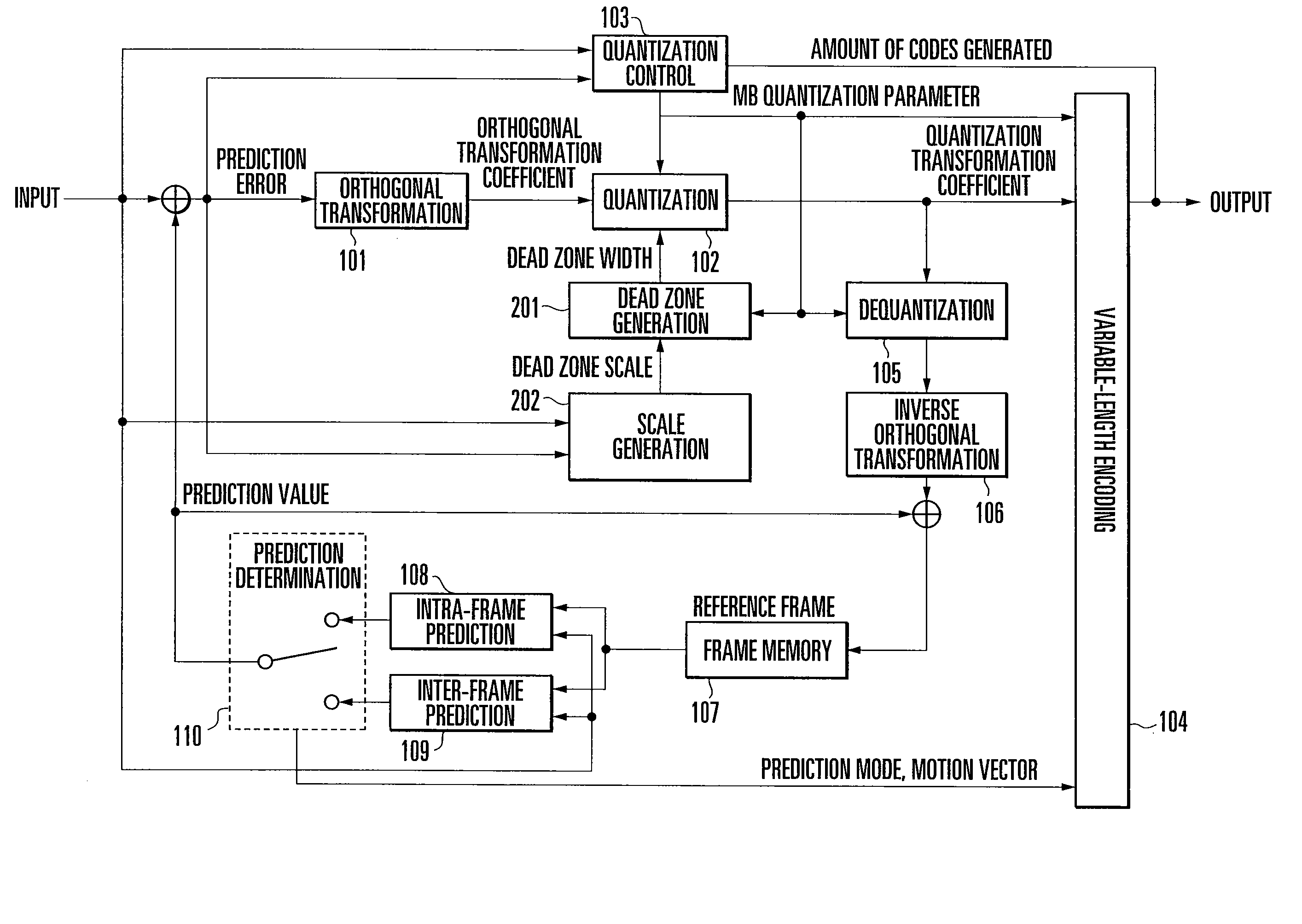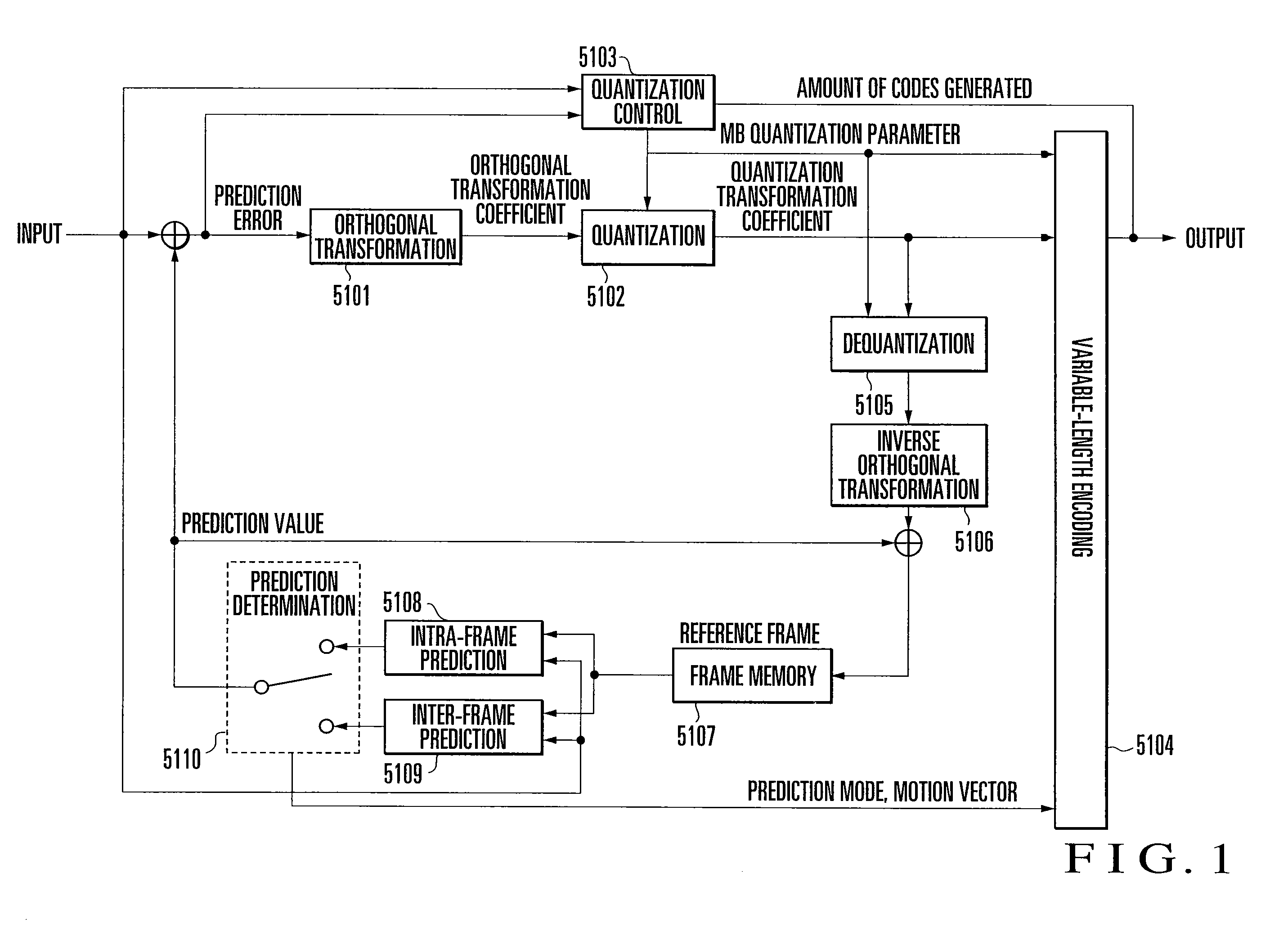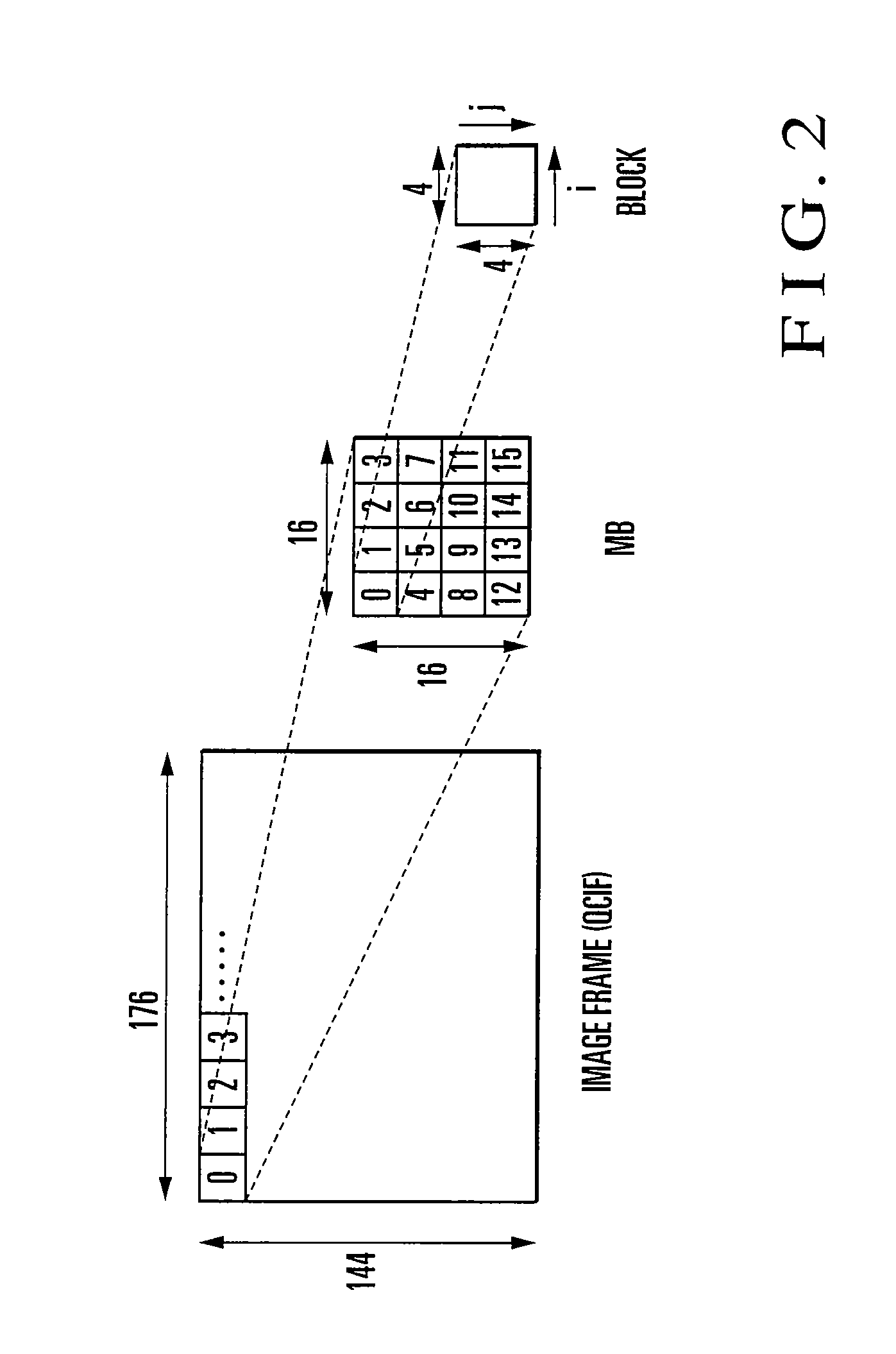Image encoding method, device thereof, and control program thereof
a control program and image encoding technology, applied in the direction of color television with bandwidth reduction, signal generator with optical-mechanical scanning, signal system, etc., can solve the problems of inability to perform quantization suitable. , to achieve the effect of finely quantizing an entire image frame, and reducing the amount of codes
- Summary
- Abstract
- Description
- Claims
- Application Information
AI Technical Summary
Benefits of technology
Problems solved by technology
Method used
Image
Examples
first embodiment
[0056] The first embodiment of the present invention will be described.
[0057]FIG. 3 shows an example of the arrangement of the first embodiment.
[0058] In this embodiment, an image frame forming a moving image is divided into a plurality of areas called macroblocks (MBs), and each block obtained by further dividing each MB is encoded.
[0059] A prediction value supplied from an intra-frame prediction device 108 which performs prediction from inside the same image frame reconstructed in the past or an inter-frame prediction device 109 which performs prediction from a past image frame reconstructed in the past is subtracted from the above MB. The MB signal from which the prediction value has been subtracted is called a prediction error signal.
[0060] The above prediction error signal is divided into smaller blocks (to be simply referred to as blocks hereinafter), and each block is transformed from a spatial domain into a frequency domain by an orthogonal transformation device 101.
[00...
second embodiment
[0127] The second embodiment of the present invention will be described.
[0128]FIG. 11 shows the arrangement of the second embodiment of the present invention. The arrangement of the second embodiment comprises a spatial frequency dead zone scale generator 203 in place of the block dead zone scale generator 202 in the arrangement of the first embodiment. The spatial frequency dead zone scale generator 203 supplies a dead zone scale dz_scale(b,i,j) (0≦b≦15, 0≦i≦3, 0≦j≦3) corresponding to the bth block in the raster scan order in an image frame to a dead zone generator 201.
[0129] For a concrete explanation, assume that in the following description, the size of an image frame is a QCIF (176×144) size, the size of an MB is a 16×16 size, and the size of a block is a 4×4 size. Obviously, however, the present invention can be applied a case wherein other sizes are used.
[0130] The spatial frequency dead zone scale generator 203 which is a characteristic feature of the second embodiment wi...
third embodiment
[0167] The third embodiment of the present invention will be described.
[0168]FIG. 16 shows the arrangement of the third embodiment of the present invention. The arrangement of the third embodiment comprises a hybrid dead zone scale generator 204 in place of the block dead zone scale generator 202 in the arrangement of the first embodiment. A spatial frequency dead zone scale generator 203 supplies a dead zone scale dz_scale(b,i,j) (0≦b≦15, 0≦i≦3, 0≦j≦3) corresponding to the bth block in the raster scan order in an image frame to a dead zone generator 201.
[0169] For concrete explanation, assume that in the following description, the size of an image frame is a QCIF (176×144) size, the size of an MB is a 16×16 size, and the size of a block forming an MB is a 4×4 size. Obviously, however, the present invention can be applied a case wherein other sizes are used.
[0170] In addition, the hybrid dead zone scale generator 204 as a characteristic feature of the third embodiment will be des...
PUM
 Login to View More
Login to View More Abstract
Description
Claims
Application Information
 Login to View More
Login to View More - R&D
- Intellectual Property
- Life Sciences
- Materials
- Tech Scout
- Unparalleled Data Quality
- Higher Quality Content
- 60% Fewer Hallucinations
Browse by: Latest US Patents, China's latest patents, Technical Efficacy Thesaurus, Application Domain, Technology Topic, Popular Technical Reports.
© 2025 PatSnap. All rights reserved.Legal|Privacy policy|Modern Slavery Act Transparency Statement|Sitemap|About US| Contact US: help@patsnap.com



